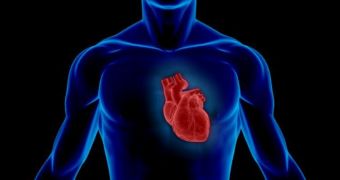Exposure to air pollution stemming from traffic can cause changes in both the structure and the function of the right ventricle of the human heart, researchers argue in a recent paper in the American Journal of Respiratory and Critical Care Medicine.
Specialist Peter Leary with the University of Washington Medical Center in Seattle and his colleagues suspect that, given the evidence at hand, this might be the reason why people who are exposed to traffic emissions are more likely to be diagnosed with a heart disease at some point in their lives. Eurek Alert tells us that, as part of their research into how exposure to traffic-related air pollution affects the anatomy and the physiology of the human heart, scientist Peter Leary and his colleagues carried out a series of experiments.
More precisely, they enlisted a total of 3,896 volunteers whose cardiovascular health they assessed with the help of magnetic resonance imaging, otherwise known as MRI.
According to the same source, neither of the individuals who had their hearts looked at as part of this investigating was suffering from a cardiovascular disease at the time when they underwent magnetic resonance imaging.
After collected information concerning the health condition of these individuals' hearts, the researchers tried to estimate their exposure to outdoor oxides of nitrogen throughout the course of the 12 months preceding the MRI examination.
It was thus discovered that an increased exposure to nitrogen dioxide went hand in hand with a 5% increase in right ventricular mass and a 3% increase in right ventricular end-diastolic volume.
The researchers claim that these associations remained true even when variables such as cardiovascular risk factors, markers of inflammation, lung disease, socioeconomic status, and left ventricular mass and volume were taken into consideration.
“Using exposure to nitrogen dioxide as a surrogate for exposure to traffic-related air pollution, we were able to demonstrate for the first time that higher levels of exposure were associated with greater right ventricular mass and larger right ventricular end-diastolic volume,” says Peter Leary.
“Greater right ventricular mass is also associated with increased risk for heart failure and cardiovascular death,” the study lead author goes on to explain.
Peter Leary and his colleagues wish to stress the fact that, although their findings do not prove beyond a shadow of a doubt that air pollution triggers anatomical and functional changes in the human heart's right ventricle, they nonetheless indicate that a connection between the two exists.
“The morphologic changes in the right ventricle of the heart that we found with increased exposure to nitrogen dioxide add to the body of evidence supporting a connection between traffic-related air pollution and cardiovascular disease,” researcher Peter Leary explains.

 14 DAY TRIAL //
14 DAY TRIAL //